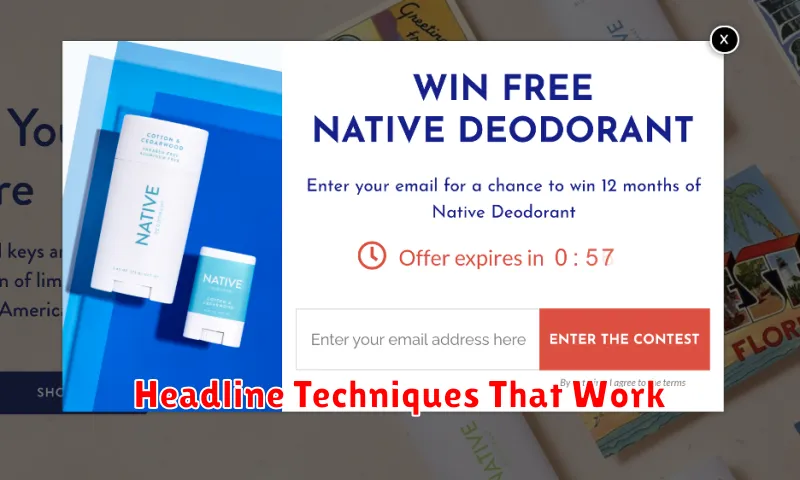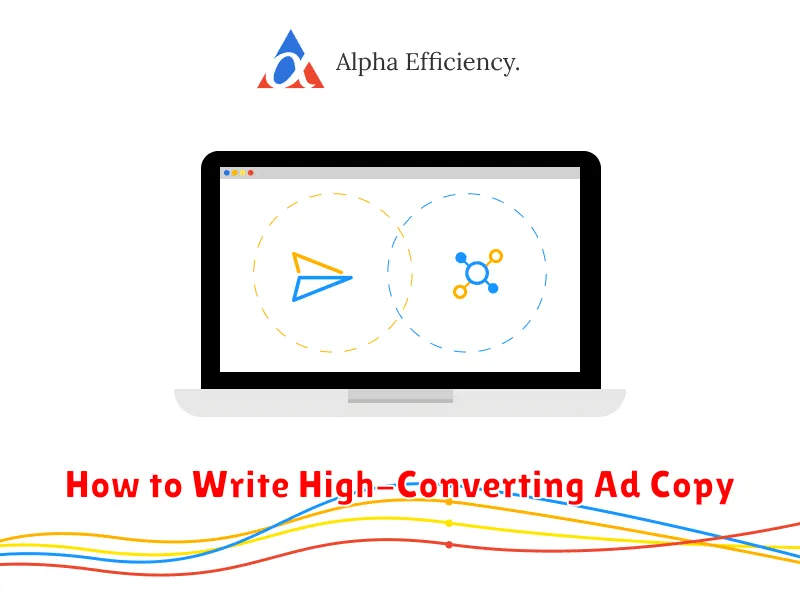Are you struggling to write ad copy that actually converts? Do your ads feel like they’re shouting into the void, with little to no return on your investment? Learning how to write high-converting ad copy is crucial for any successful marketing campaign. This article will provide you with actionable strategies and techniques to transform your ad copy from mediocre to magnetic, drawing in potential customers and driving conversions. We’ll explore the essential elements of compelling copy, focusing on how to craft messaging that resonates with your target audience and motivates them to take action.
Crafting high-converting ad copy is both a science and an art. It requires understanding your audience’s needs and desires, and then presenting your product or service as the perfect solution. This guide will delve into the key principles of writing effective ad copy, including crafting compelling headlines, highlighting key benefits, and using strong calls to action. By mastering these techniques, you’ll be able to write high-converting ad copy that grabs attention, generates interest, and ultimately drives sales, maximizing your return on ad spend and achieving your marketing goals.
What Makes Ad Copy Convert?
Effective ad copy hinges on several key factors, all working in concert to persuade the audience to take a desired action. Clarity is paramount. Your message must be easily understood at a glance, communicating the core value proposition without ambiguity. This ties directly into relevance. The ad must resonate with the target audience’s needs, pain points, or aspirations. An ad for hiking boots shown to someone who prefers indoor activities is unlikely to convert.
A compelling call to action is crucial. Tell the audience precisely what you want them to do, whether it’s “Shop Now,” “Learn More,” or “Sign Up Free.” This provides direction and encourages immediate engagement. Credibility also plays a significant role. Building trust through testimonials, data, or endorsements can significantly impact conversion rates. Highlighting unique selling propositions and benefits further strengthens the ad’s persuasive power.
Finally, testing and optimization are essential. Continuously analyzing ad performance and making data-driven adjustments ensures your copy remains effective and relevant over time. Monitor key metrics such as click-through rates and conversion rates to identify areas for improvement and refine your approach.
Understanding User Intent
Before crafting compelling ad copy, it’s crucial to understand user intent. This means grasping what users are searching for, what problems they’re trying to solve, and what motivates them to click on an ad.
There are generally four types of user intent: navigational (finding a specific website), informational (seeking information on a topic), investigational (researching products or services before purchasing), and transactional (ready to buy). Recognizing these intents allows you to tailor your ad copy to resonate with the user’s current needs.
For example, if a user searches for “best running shoes for marathon training,” their intent is likely investigational. Your ad copy should focus on features, benefits, and expert reviews to help them make an informed decision. Conversely, a search like “buy Nike Pegasus 39” indicates a transactional intent, requiring ad copy that emphasizes pricing, availability, and a clear call to action.
Headline Techniques That Work

Crafting compelling headlines is crucial for ad copy that converts. A strong headline grabs attention and entices the reader to learn more. Several techniques can significantly improve headline effectiveness.
Using numbers provides concreteness and can make a headline more appealing. For example, “5 Tips to Improve Your Marketing Strategy” is more compelling than “Improve Your Marketing Strategy.”
Highlighting a clear benefit is essential. Tell the reader exactly what they stand to gain. “Save 20% on Your Next Purchase” clearly communicates the value proposition.
Creating a sense of urgency can encourage immediate action. Phrases like “Limited Time Offer” or “While Supplies Last” motivate readers to click.
Incorporating keywords relevant to your target audience ensures your ad appears in relevant searches and attracts qualified leads. Consider what terms your ideal customer would use.
Asking a question can pique reader curiosity and draw them into your ad copy. For example, “Are You Ready to Transform Your Business?” can be an effective opening.
Emotional Triggers in Copy
Emotional triggers are psychological cues that evoke specific feelings and influence decision-making. In advertising, leveraging these triggers can significantly impact conversion rates by resonating with the audience on a deeper level.
Several key emotional triggers are frequently used in high-converting ad copy. Fear of missing out (FOMO) is a powerful motivator, prompting immediate action. Limited-time offers, exclusive deals, and dwindling availability tap into this fear.
Pain points are another effective trigger. Addressing a customer’s problem and offering a solution creates a strong connection. Highlighting the negative consequences of not using your product or service can also be persuasive.
Appealing to aspirations like success, wealth, or status can drive conversions. Positioning your product as a tool to achieve these desires makes it more appealing. Similarly, emphasizing social proof through testimonials and positive reviews builds trust and encourages purchase.
Highlighting Unique Benefits
Consumers are constantly bombarded with advertisements. To cut through the noise, your ad copy must clearly and concisely communicate the unique benefits of your product or service. Don’t just list features; explain how those features translate into tangible advantages for the customer.
Focus on what problems you solve and how you do it better than the competition. Do you offer faster shipping? A longer warranty? Superior customer service? These are the points to emphasize. Highlighting a unique selling proposition (USP) is crucial for grabbing attention and driving conversions.
Consider using a value proposition statement to succinctly communicate the key benefit. For example, instead of stating “Our software has a user-friendly interface,” try “Save time and reduce frustration with our intuitive software.” This focuses on the positive outcome for the user.
Use strong action verbs and persuasive language to showcase the value your offering brings. Instead of “We offer free shipping,” consider “Enjoy free shipping on all orders.” This small change creates a more engaging and appealing message.
Call-to-Action Phrases
Effective call-to-action (CTA) phrases are crucial for driving conversions. They instruct the reader on the desired action and create a sense of urgency. Choosing the right phrase depends on your campaign goals. Are you aiming for sales, leads, or engagement?
For sales-focused ads, consider phrases like “Shop Now,” “Buy Today,” “Get Yours Now,” or “Claim Your Discount.” These CTAs create a sense of immediacy and encourage immediate purchase.
If lead generation is your goal, use CTAs like “Sign Up Free,” “Request a Demo,” “Download Now,” or “Learn More.” These phrases entice users to provide their information in exchange for valuable content or services.
For engagement-focused campaigns, try “Watch Now,” “Read More,” “Find Out More,” or “Join the Conversation.” These CTAs encourage interaction with your content and brand.
Remember to keep your CTAs clear, concise, and compelling. Strong CTAs use action-oriented verbs and create a sense of urgency, ultimately leading to higher conversion rates.
Avoiding Clickbait
Clickbait tactics might generate initial clicks, but they ultimately erode trust and damage your brand’s reputation. Focus on crafting ad copy that accurately reflects the value proposition of your product or service.
While a touch of intrigue can be effective, avoid misleading language or sensationalized phrasing that sets unrealistic expectations. For example, instead of “You Won’t Believe What Happened Next!” try a more straightforward approach like “Discover the Secret to [Desired Outcome].”
Honesty is crucial. Overpromising or exaggerating benefits will lead to disappointed customers and low conversion rates. Ensure your ad copy aligns with the actual user experience.
Consider what the user genuinely wants to know and address their needs directly. Clarity and transparency build confidence. Clearly stating the benefits and features of your product or service in a concise and factual manner will attract qualified leads and increase conversions.
A/B Testing Ad Variants
A/B testing is a critical component of optimizing ad copy for conversions. It involves creating multiple versions (variants) of your ad, each with slight variations in elements like the headline, body text, or call to action. These variants are then shown to different segments of your target audience simultaneously.
By analyzing the performance of each variant, you can identify which elements resonate most effectively with your audience. Track key metrics such as click-through rate (CTR), conversion rate, and cost per conversion. The variant that performs best against your chosen metric becomes the “winner” and should be used as the basis for future ad iterations.
When A/B testing, change only one element at a time. This isolates the impact of that specific change and provides clear insights into its effectiveness. For example, test different headlines against the same body text, then test different body text with the winning headline. This methodical approach ensures accurate data and helps you optimize your ad copy effectively.
Platform-Specific Tips
While general copywriting principles apply across platforms, tailoring your approach is crucial. Each platform has its own nuances and user expectations. Consider these platform-specific tips to optimize your ad copy:
For Google Search Ads, focus on keywords and relevance. Users are actively searching for information, so directly address their needs. Use clear and concise language that highlights the benefits of your product or service. Incorporate strong calls to action to encourage clicks.
On Social Media platforms like Facebook and Instagram, engage users with compelling visuals and storytelling. Focus on building a connection with your audience. Use emotional language and highlight the social proof of your offerings. Tailor your message to the specific platform and its demographic.
For display ads, capture attention with visually appealing creatives and concise messaging. Users may not be actively searching for your product, so make your value proposition clear and enticing. Use a strong call to action to drive traffic to your website.
Analyzing Performance Data
After launching your ad campaigns, consistent performance analysis is crucial. This involves tracking key metrics to understand what’s working and what isn’t. Click-through rate (CTR) is a vital indicator of ad copy effectiveness. A high CTR suggests your ad resonates with the target audience and compels them to click. Conversely, a low CTR signals a need for revision.
Beyond CTR, monitor your conversion rate. This metric reveals how many clicks translate into desired actions, such as purchases or sign-ups. A strong conversion rate indicates alignment between your ad copy and landing page messaging. If your CTR is high but your conversion rate is low, examine your landing page for inconsistencies or friction points.
Cost per click (CPC) and return on ad spend (ROAS) are key financial metrics. A high CPC isn’t necessarily negative if it yields a high ROAS. The goal is to optimize for profitability, not just low costs. Analyze these metrics regularly to refine your bidding strategy and maximize your return.

